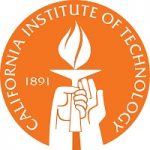项目介绍
The education and training of graduate students toward the doctoral degree is a major emphasis of the Astronomy Department.
- Life as a Caltech Astronomy Graduate Student
- Applying to Caltech Astronomy Graduate School
- Caltech Graduate Office
- For new graduate students:
- Survival Guide
- Astronomy Option Representative (Lynne Hillenbrand)
- Current Caltech Astronomy graduate students
- Information for Graduate Students from the Caltech Course Catalog
An advanced degree in astrophysics at Caltech is contingent upon an extensive research achievement. Students in the program are expected to join a research program, and carry out independent research leading to publications in peer-reviewed journals, as well as a thesis. They must complete a minimum of 9 terms of formal oral research presentations. In their first year, the students must pass a series of six courses in astrophysics and by the end of their second year, also a minimum of four physics or equivalent courses. The students must pass three oral exams administered by faculty committees: a qualifying exam at the end of their first year, a candidacy exam during their third year, and the final PhD defense. Each of these examinations includes evaluation of the students’ research work and also their mastery of broader facts, concepts and current frontiers of astrophysics. The examining committees read and evaluate the candidates’ descriptions of their work, their published and unpublished work, the PhD thesis, and evaluate their performance in the oral examinations.
Graduates of our program are expected to have extensive experience with modern research methods, a broad knowledge of contemporary astronomy and astrophysics, and the ability to perform as independent researchers at the highest intellectual and technical levels.
The Caltech Astronomy graduate program aims to prepare students for creative and productive careers in astrophysical research and to train the next generation of leaders in the field. While the vast majority of our graduate students come from undergraduate astronomy or physics programs, some arrive with related majors such as engineering. In addition to those admitted directly to Astronomy, students in Physics who have astrophysical interests may conduct research with Astronomy or Physics faculty. Conversely, Astronomy students may also take the opportunity to work with faculty in either department. A discussion of the Astronomy option is contained in the following text; for more information on the Physics option, refer to the Caltech website.
Admission
Incoming students have a solid background in physics, and although good preparation in astronomy is helpful, this is not required for admission. All applicants, including those from foreign countries, submit Graduate Record Examination scores for the verbal and quantitative aptitude tests plus the advanced test in physics. Letters of recommendation, a personal statement, and transcripts round out the application package.

Caltech is a proud member of the Cal-Bridge program. The Cal-Bridge program has the mission of creating opportunities for students of traditionally underrepresented groups to participate and advance in physics, astronomy, computer science, and computer engineering and to increase their numbers in PhD programs in those fields. More information here. All Cal-Bridge scholars are guaranteed fee waivers when applying to our graduate program.
Academic Program
In astrophysics, we strive to understand the physical processes that govern the universe, its constituents, and their evolution. We use the apparatus and methodology of physics to gather and interpret data and to conduct theoretical studies. Caltech Astronomy students are embedded in a large and diverse department with interesting talks, seminars, and conferences happening nearly every day. This helps them acquire broad knowledge and good scientific practices. They receive intensive classroom training, including exposure to all aspects of modern astrophysics.
There are six astronomy classes to be completed during the first year of graduate study: Radiative Processes, Structure and Evolution of Stars, Structure and Dynamics of Galaxies, High-Energy Astrophysics, Interstellar Medium, and Cosmology and Galaxy Formation.
During their first or second year, students focusing on observational astronomy also take the Astronomical Measurements and Instrumentation sequence and four courses in physics or another appropriate subject. Theory students, on the other hand, select six classes in physics, mathematics, or other applicable fields. All first-year students participate in Introduction to Modern Research which exposes them to available research opportunities.
After their first year, students are encouraged to enroll in upper-level special topics courses, which are offered according to student demand and professor interest. All students second-year and beyond take a Journal Club seminar to hone their presentation skills. For more information on courses, please see pr.caltech.edu/catalog/courses/listing/ay.html.
As with most graduate departments, Caltech has a qualifying exam. Here, the exam is an hour-long oral examination given at the start of the second year and focused on the required first-year astronomy courses plus a presentation on the student’s first-year research.
After passing the qualifying exam, graduate students transition to teaching-assistant positions for the duration of their second year. The teaching assignments are made by the students themselves and include assisting with courses ranging from first-year graduate classes to undergraduate lectures, recitations, and laboratory classes at all levels. After the one-year teaching requirement, most students move to full-time research positions.
For students interested in mentoring and teaching, there are additional opportunities to help lecture for courses or to continue working as a teaching assistant‚ especially for the freshman-level introductory astronomy class. In addition, graduate students often co-mentor summer students through the Caltech Summer Undergraduate Research Fellowship (SURF) Program.
Research
The graduate program emphasizes independent research, and students are free to pursue study in virtually any area of astrophysics. They are encouraged to sample several different research projects before embarking on their thesis work. Research may be supervised by any of the teaching or research faculty, and can be performed in collaboration with postdocs or larger consortia. Faculty members advise, on average, 2 postdocs and 1-2 advanced graduate students (3rd through 5th-year) as well as the 1st and 2nd-year students collectively. Many also take on one or more undergraduate students each summer.
Caltech’s extensive, world-class observational facilities have always been an important component of our graduate education program, and our students learn the trade from the active example of their peers and advisors. The access they have to develop and use these observatories is simply unmatched by any other institution. Our deep connections to the JPL and the “Greater IPAC” communities, which develop and operate space missions (such as Spitzer, Herschel, and WISE), add to the large list of opportunities open to the students. To match its unparalleled observational resources, Caltech has an excellent theoretical astrophysics group – TAPIR – shared by the Physics and Astronomy departments. Students in TAPIR work alongside leading scientists in many venues of theoretical astrophysics and also benefit from collaborations with leading observers and instrumentalists.
Thesis Projects
Many Caltech theses represent substantial, even milestone, results in their fields and position our graduates for continuing careers of excellence. Eighty percent of our graduate program matriculates receive Ph.D. degrees, within a mean time of 5.5 years. Students who graduate from Caltech with an M.S. degree generally find employment in education, research, or industry.
Caltech Thesis Database: Astronomy
Caltech Thesis Database: Astrophysics
Alumni & Job Placement
Caltech Astronomy boasts a long and impressive list of Ph.D. alumni who have gone on to distinguished careers in the field. Details on many graduates of the program are listed on our website along with their current employment and links to archived theses.
Overall, our graduates do very well in the postdoctoral job market, and typically several per year win prestigious fellowships. The long-term research employment prospects for Caltech Astronomy Ph.D.s compare very favorably with those at other institutions (see figure). For instance, when compared to the national average, we have placed a higher percentage of our Ph.D.s into highly competitive faculty positions at research universities.
Among alumni graduating over the past 30 years, close to half (47%) have found long-term employment as professors at Ph.D.-granting universities, with an additional 34% employed as staff at observatories or national laboratories. 13% are in business or industry, 2.5% are professors at 4-year or community colleges, and another 2.5% work in other education-related careers.
Nationally, while the number of bachelor’s degrees in astronomy was within 15% of constant throughout the 1980s and 1990s, over the past decade there has been close to 100% growth in the number of astronomy majors and 60% growth in physics majors. The increased pools for graduate admission have been accompanied by a smaller yet very substantial 50% increase in the number of available first-year graduate student positions nationwide. At the same time, the number of doctorate degrees awarded has remained stable (+/-15%).
At Caltech we typically graduate between 2 and 6 Astronomy Ph.D.s per year, and a similar number of Physics graduate students whose primary interest is astrophysics. Our matriculating first-year class in Astronomy ranges from year to year between 2 and 9 students. Presently in Astronomy, there are 25 graduate students. We also have 2-5 undergraduate majors per year. Almost all of our undergraduate majors participate in summer research here at Caltech, and one-half to two-thirds go on to graduate school in astronomy or physics.
Caltech graduates often maintain active collaborations with the faculty and staff at Caltech, even long after their graduation.
联系方式
电话: (626) 395-6811相关项目推荐
KD博士实时收录全球顶尖院校的博士项目,总有一个项目等着你!






